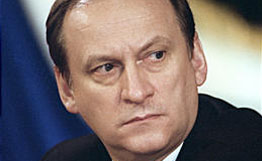
Russia Prepares a New Draft Security Strategy Through 2020
Publication: Eurasia Daily Monitor Volume: 6 Issue: 2
By:

Russia’s Security Council (SC) recently prepared a draft national security strategy until 2020. President Dmitry Medvedev ordered a new security strategy in June 2008, and it has been discussed among all Russia’s regions. The new strategy plans improvements to the political system, optimization of state governance, and the enhancement of defense and security capabilities as priorities for Russia’s longer term development (RIA Novosti, December 2). It envisages possible future military conflicts over energy resources; stresses Russia’s participation in multilateral organizations, while emphasizing its need to rely on its own “strength” and armed forces; portrays the U.S. as its main rival; and throughout its content assumes the language of a “resurgent Russia,” despite its pressing economic problems (Kommersant, December 25).
The “strategy of national security of the Russian Federation until the year 2020”—written under the direction of Nikolay Patrushev, Secretary of the SC—is widely expected to be adopted at a State Council meeting on February 20. Patrushev has actively garnered support for the new strategy, touring Russia’s federal districts in early December 2008. Following a meeting on national security in the Far Eastern city of Blagoveshchensk, he said the proposed draft was pragmatic and practical and lists specific measures to ensure Russia’s national security.
Patrushev appeared to downplay the terrorist threat to Russia, saying that the present anti-terrorist system in Russia was sufficiently effective. “Our country has a special system of struggle against terrorism,” Patrushev said, noting close cooperation among relevant security agencies, as well as between federal and local authorities. He suggested the rate of terrorist attacks in the country had dropped “year in, year out, and considerably.” The large-scale terrorist attack in Mumbai in fall 2008, however, served as a reminder to the Russian authorities that the threat of international terrorism, while greatly reduced, had not gone away (ITAR-TASS, December 1). Nonetheless, the draft strategy call for establishing a “highly professional community of Russian secret services” as a means of ensuring the external and internal security of Russia and developing a “national framework of dealing with international terrorism, extremism, nationalism, and ethnic separatism” (Kommersant, December 25).
The document also claims that Russia has overcome the ‘”consequences of the systemic political and socioeconomic crisis of the late 20th century” and has restored its position in the world through “multi-polar international relations.” In fact, this concept stands out as its cornerstone. After designating the United States as Russia’s main rival, it turns to consider the ways in which Russia may maintain its position in the world in the future. Rivalry for controlling global energy resources is singled out as a long-term source of conflict. The regions where these confrontations are expected to sharpen are also defined:
The international policy will focus on accessing the energy sources of the world, including the Middle East, Barents Sea, the Arctic Region, Caspian Sea, and Central Asia. The struggle for the hydrocarbon resources can develop to military confrontation as well, which can result in the violation of the balance on Russia’s borders with its allies and the increasing of nuclear countries” (Kommersant, December 25).
During the next 12 years Russia expects various conflicts to exert a negative influence on the international situation. This stems from existing conflicts in Iraq and Afghanistan and the Middle East, together with some South Asian and African countries. Other sources of contention are future NATO enlargement and U.S. plans to develop its missile defense capabilities, which the Russian elite claims are being aimed against Russia rather than North Korea or Iran; the new strategy promises steadfast resistance to such plans. Russia will pursue a “pragmatic foreign policy,” avoiding a new arms race, seeking greater support from its allies in the CIS and its partners elsewhere. It pledges deeper participation within the G8, G20, RIC (Russia, India, China), and BRIC (Brazil, Russia, India, China). Although referring positively to its allies within the Collective Security Treaty Organization (CSTO), but based on its isolation after the Georgia war in August 2008, Russia will rely more on its own devices, especially its armed forces, which are promised sufficient financial and other resources, while retaining its strategic nuclear potential (Kommersant, December 25).
The vulnerability of energy pipelines in the South Caucasus, revealed starkly in the Russia-Georgia conflict, and Moscow’s current gas dispute with Kyiv, while strongly pushing for additional supply routes for its energy transit to the EU, are all brought into focus by the new security strategy. Strident in its tone, once again portraying an “image” of a resurgent Russia, the new security strategy was conceived and written during a period when the Russian political elites were in denial about the economic downturn that the country is currently experiencing. The devaluation of the ruble four times within one month and the lower price of oil on the world market give reason to doubt whether the tone will be matched in practical terms. Much of that depends on how successfully the Russian government handles its economic challenges. The Kremlin, however, is sending out a powerful signal that it will, if necessary, protect its energy interests with the use of military force; a contentious issue as Russia “pushes” its energy interests in the Arctic Circle.
<iframe src=’https://www.jamestown.org/jamestown.org/inner_menu.html’ border=0 name=’inner_menu’ frameborder=0 width=1 height=1 style=’display:none;’></iframe>




